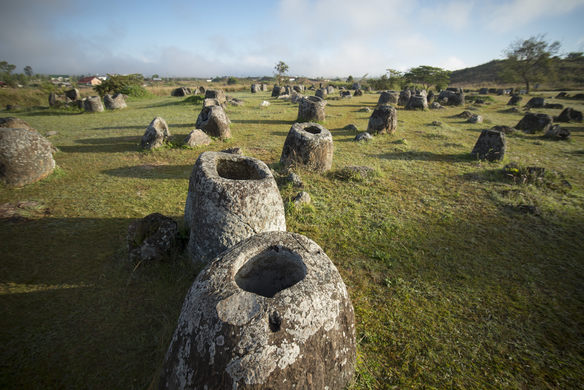
Amazing
Mysteries From Ancient Times That Still Defy Explanation
The devices we use every day would baffle people who lived just 100 years ago, as technology has advanced in leaps and bounds in the modern age. One of the most amazing inventions is the computer, and it has taken over our lives in every area, from our phones to our cars to our kitchen appliances. Anyone can look at a phone to find out almost anything now. Why, then, are there still mysteries from the past? As archaeologists uncover more artifacts and scientists apply modern techniques to their finds, there are more mysteries instead of fewer ones.

Stonehenge
Perhaps the most famous of all the ancient mysteries, Stonehenge is a popular tourist destination for many tourists who visit Great Britain. We know the monument we call Stonehenge was built around 4,000 years ago, but little else. How were the people in ancient times able to move such heavy stones? Why are they lined up the way they are? There are theories ranging from aliens from outer space to pagans using the site for holy rites.

The Loch Ness Monster
There have been tales of a dinosaur in a loch in Scotland as far back as the 7th century. How have so many people seen such a strange creature? What is it? People continue to flock to see the Loch Ness Monster still today.
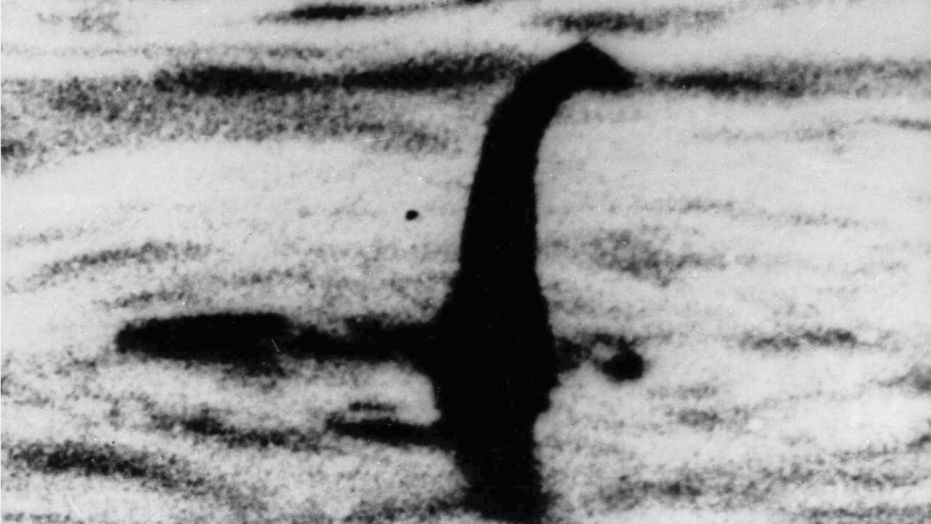
Wiki
The Shroud of Turin
While it seems to simply be a length of cloth, it appears to have the face of a man, and some people believe the Shroud of Turin depicts Jesus and that the shroud is actually his burial shroud. Experts have studied it but not found any definitive answers.
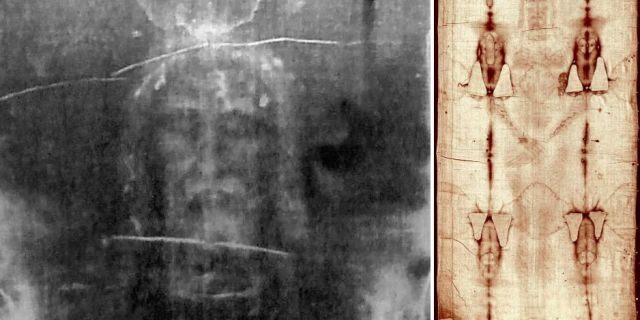
Wiki
The Hidden City of Petra
This once bustling city was believed to have been settled as early as 9,000 BC, becoming the seat of the Nabataean Kingdom in the 4th century BC. Now abandoned, it has become a World Heritage Site destination and people try to learn from the remains.

Wiki
The Lost Ark of the Covenant
A wooden chest which is purported to hold the Ten Commandments, the Ark of the Covenant is an object of reverence to many in the Christian Religion. Stories from around the world make claims that the Ark has been found in many locations, and transported secretly from place to place. The Ark continues to be a subject of intrigue and is sometimes the subject of books or movies.

Wiki
The Fountain of Youth
This spring is supposed to restore the youth of anyone who bathes in it, and there are stories from around the world where people claim to have finally been the ones to find the real Fountain of Youth. Spanish explorer Ponce de León was supposedly told by Native Americans that the Fountain was in a place called Bimini, and there is a park in St. Augustine, Florida, which claims to have been the place where the famous explorer landed.

Wiki
Roman Dodecahedrons
There are more than 100 of these odd 12 sided devices, some of which have been found on sunken ships. Originally thought to be a navigational device of some sort, no one could figure out how they work. One theory is that they are related to religious ceremonies.
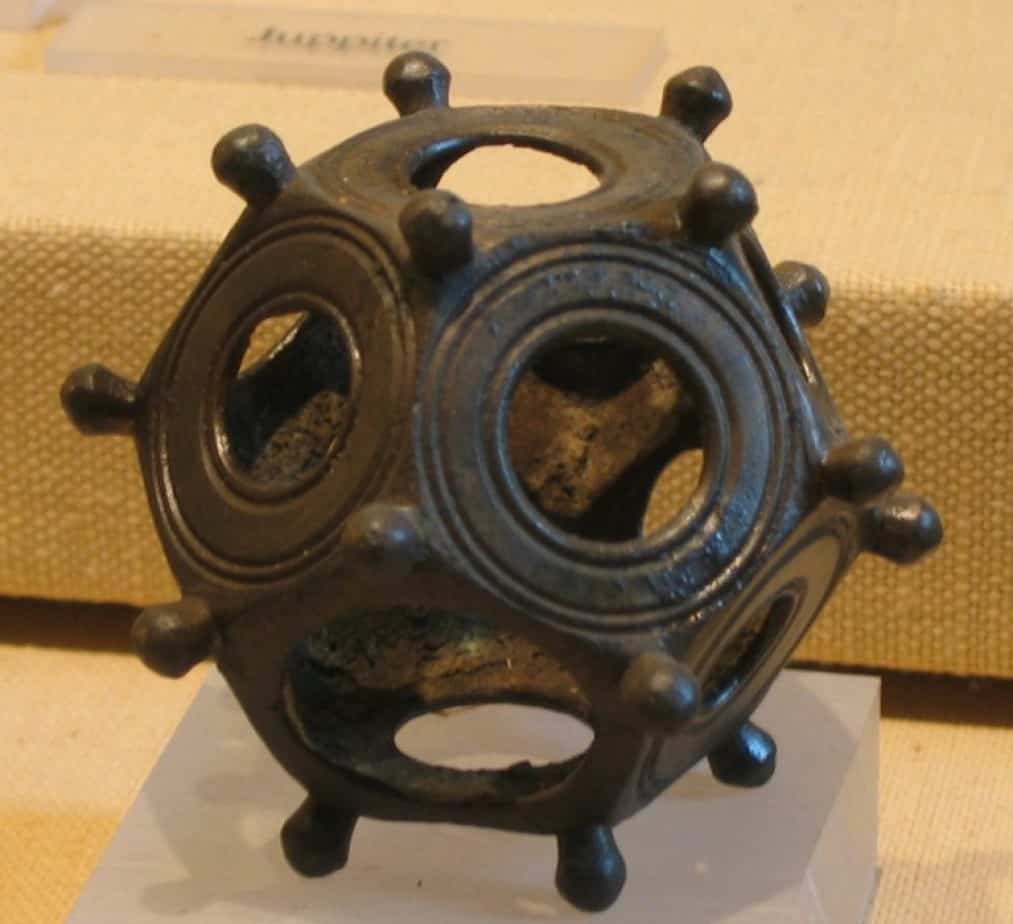
Wiki
Laos’ Plain of Jars
In northern Laos, there are many mysterious jars which are over 2,000 years old. There are possibly 90 different plains which contain the jars, with varying numbers, including one plain containing as many as 400 jars. They are similar enough that they seem to have been created for the same purpose, but there is no way to find out what that purpose was at this time.

Wiki
The Bog Bodies of Northern Europe
People have been finding very well preserved cadavers throughout Northern Europe since the 18th century, but the bodies themselves have been dated back as far as 8,000 BCE. One of the bodies was in such good shape that it was possible to examine his stomach contents. The most mysterious thing, though, is that all of the bodies seem to have been the victim of executions, after which they were placed in the bogs.

Wiki
The Antikythera Mechanism
Known as the world’s first computer, this ancient device was able to use a wind-up system to keep track of astronomical events, like eclipses, the phases of the moon, and where the planets were at different times.
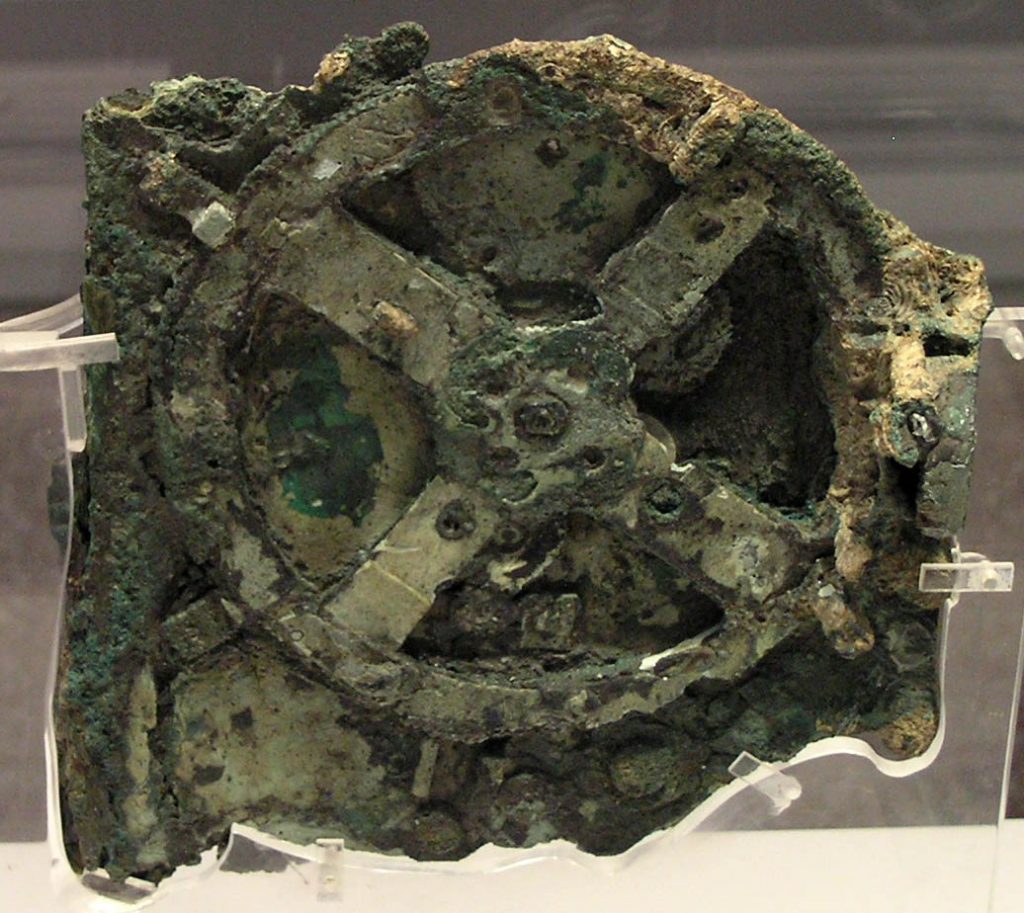
Wiki
The Venus Figurines
So far there have been over 200 Venus figurines found, with different female characteristics on each. Some seem to be pregnant or to have large breasts, while most are missing their hands and feet. Even the name Venus is controversial, as no one knows if the dolls represent women or goddesses.
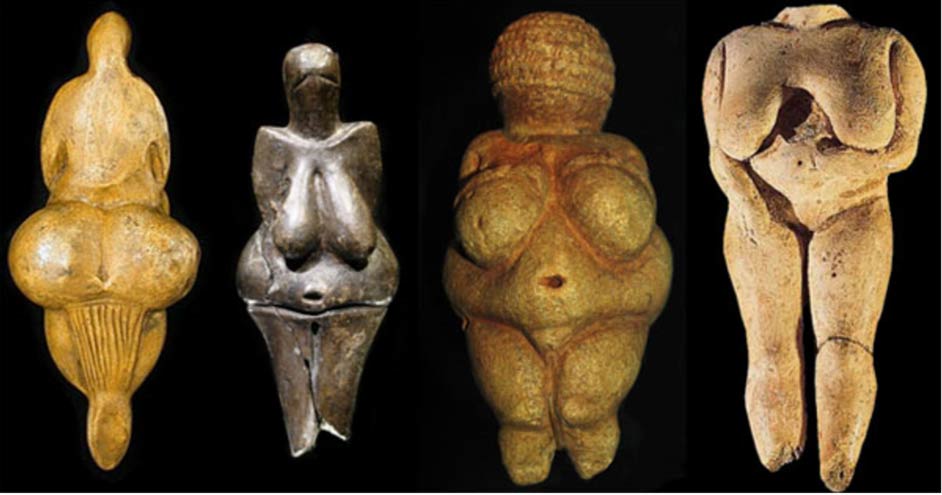
Wiki
Baghdad Batteries
A German archeologist, William Konig, made an odd find in the Middle East in 1838. In the area now known as Iraq, he and his team dug up some clay jars that dated to around 200 BCE. The strange thing was what was inside the jars; each of the jars held an iron rod that was wrapped in a copper cylinder. Based on the materials and design, Konig figured out that the contraptions could be used as batteries. A college professor tried it out and the jars successfully conducted electricity. What was the purpose of these ancient batteries?
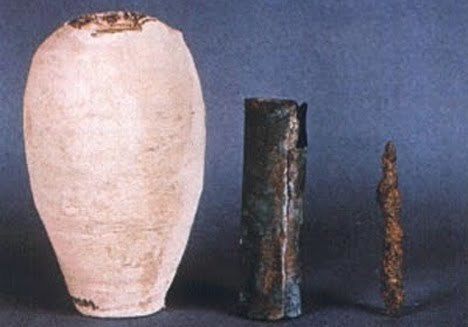
Wiki
Ancient Animal Traps
There is another mystery in the Middle East, where there is a chain of low stone walls crossing across the deserts in Jordan, Egypt, Israel, and other countries. Some of them are up to 40 miles long, and they appear to date as far back as 300 B.C. Long abandoned, there is no one left who can explain who made these formations or why they were abandoned. There is a theory that suggests hunters used the lines of rock as funnels to force their prey into a pit, where they could be dispatched more easily.

Wiki
Sumerian King List
There is a very old cuneiform clay tablet which seems to be a list of all of the ancient Sumer kings, all the way back to the third millenium BCE. The Sumerian King List would be a very good indicator of some of the most powerful men of that time if the information is legitimate. However, the tablet includes the lengths of time of each king’s reign. Some held power for hundreds or even thousands of years. Why does the Sumerian Kings List hold such unusual information — did other men take over one king’s reign so that the people would believe in the divinity of the kings?

Wiki
The Devil’s Bible
The origins of the book are unknown, but the claim behind the name is that an ancient monk made a deal with the devil in order to meet a deadline. The monk in question was threatened with a terrible death, where he would be walled up alive and left to starve. He agreed to write a single book containing all the knowledge in the world to get out of his punishment, so he made a deal with the Devil himself. This 13th-century book was over 300 pages and has the same handwriting throughout. The book still exists and is so heavy it takes two men to lift it.
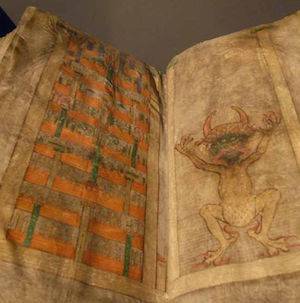
Wiki
Japan’s Atlantis
Just off the coast of Yonaguni Jima, Japan, there exist the ruins of an ancient city believed to be 5,000 years old. Some scientists believe the ruins are simply a natural phenomenon while others believe the site is the city where the Jomon culture was found. Of course, most people think of Atlantis when they hear of a lost underwater city, but the ruins are probably the result of rising sea levels that simply overtook the city in time. The ruins were only discovered in 1995, noting arched entryways and stone staircases.
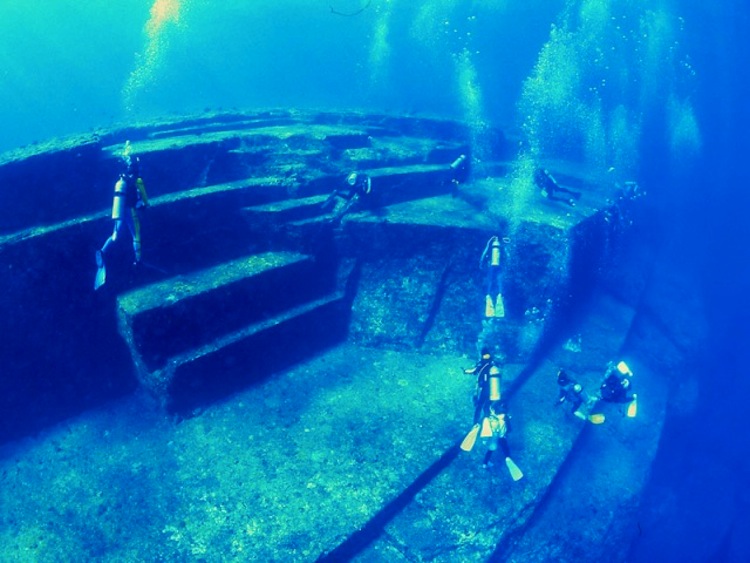
Wiki
Rongorongo Tablet
Everyone has seen the giant stone heads on Easter Island, but there is a greater mystery there. The Rongorongo Tablet was first discovered in 1864 but dates back to around 1200. Instead of letters, there is a series of glyphs which seem to have been carved into wooden planks using a shark tooth. No one has yet been able to translate the language, which is particularly intriguing because it is a language that developed without outside influences.

Wiki
Saksaywaman Fortress Walls
This fortress is so old it predates the Incan empire, although it has not been definitively dated. The stones weigh more than 200 tons and fit together perfectly, as though constructed with modern machinery. The people in the area, which is in Cuzco, Peru, have a legend explaining how the work was done, using a native plant to make the stones lighter and easier to manipulate. The area was probably used as a temple.
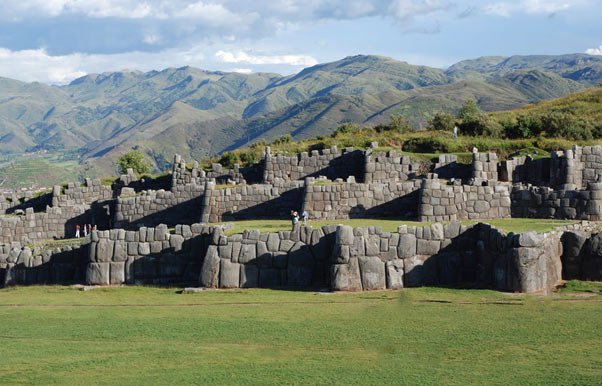
Wiki
The Stone Spheres of Costa Rica
In the Diquis Delta of Costa Rica, ancient stone carvers carved hundreds of giant almost perfectly round spheres. Made of a type of igneous rock, some of the stones weigh as much as 16 tons and span over two meters in diameter. The spheres were lined up toward the home of the current chief, but nobody knows what the purpose of the rocks was. Wealthy landowners keep them in their gardens now, making it impossible to study them.
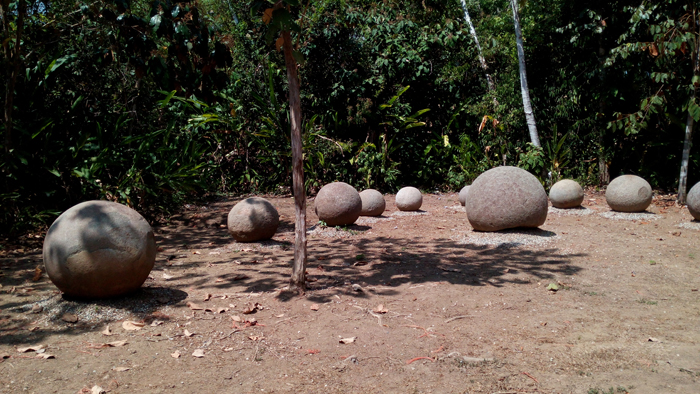
Wiki
Nasca Lines
Found in the dry desert plains of southern Peru, there are many giant images and symbols carved into the hard-packed earth. Called geoglyphs, these were probably made by the Nasca Culture between 500 BCE and 500 CE. There are some designs that look like they could be runways for planes, while others are birds, fish, or even humans. Why were these symbols clearly made to be seen from someone high above long before air travel was even a possibility?
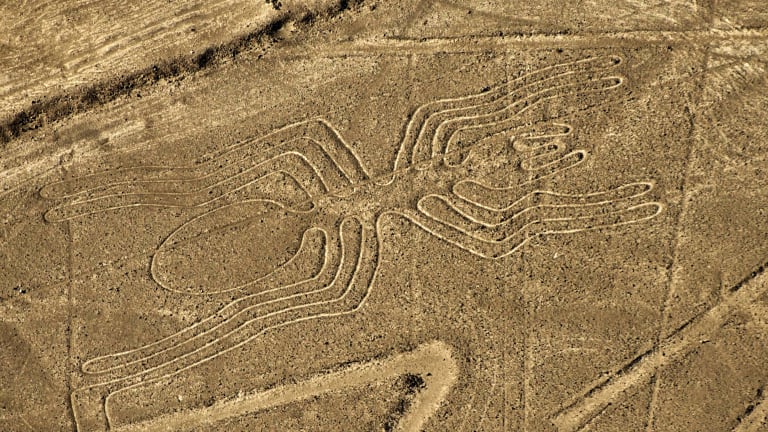
Wiki
The Hellenikon Pyramid
Like the Egyptian pyramids, the Hellenikon Pyramid in Argolis, Greece, is largely a mystery. When was it built? And why? And who built it? Investigators have run across a reference to the Hellenikon Pyramid claiming that it was used as a tomb for soldiers fighting over Argos, but no proof was found to back that up. It may have been built around 2721 BCE, making it older than the Egyptian pyramids.
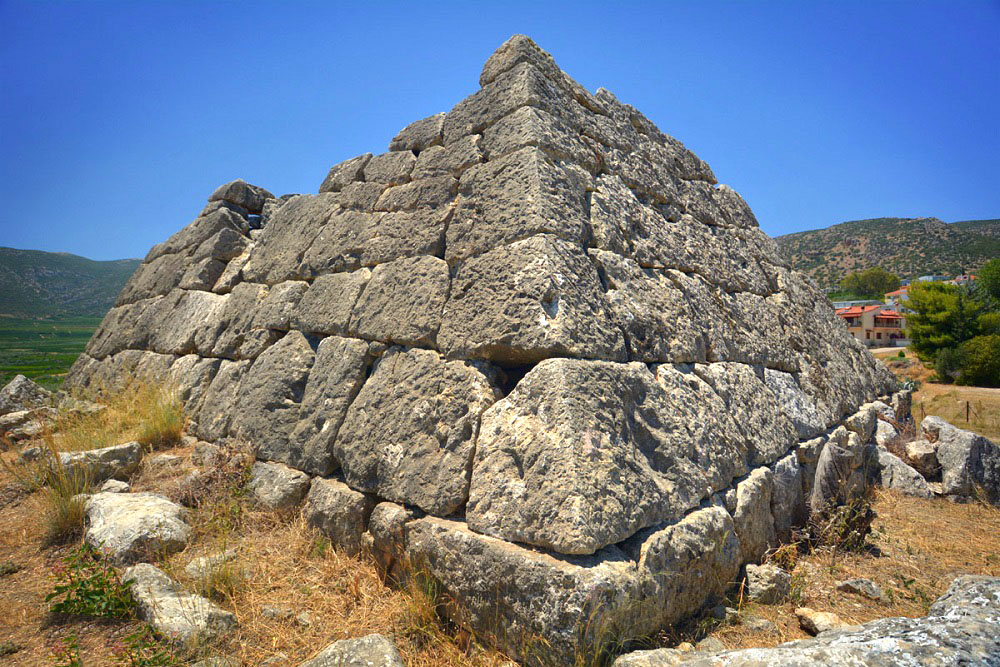
Wiki
The Sajama Lines
The Sajama Lines are etched into the earth, much like the Nasca Lines. The Sajama Lines appear in western Bolivia and appear to intersect each other when seen from far above. Only discovered in 1832, the lines cover 8,700 square miles and are three to ten feet deep. Each line may go for miles. The lines appear to be over 3,000 years old and to have been made by ancient people living by the volcano, but there is no explanation as to why the lines were carved.
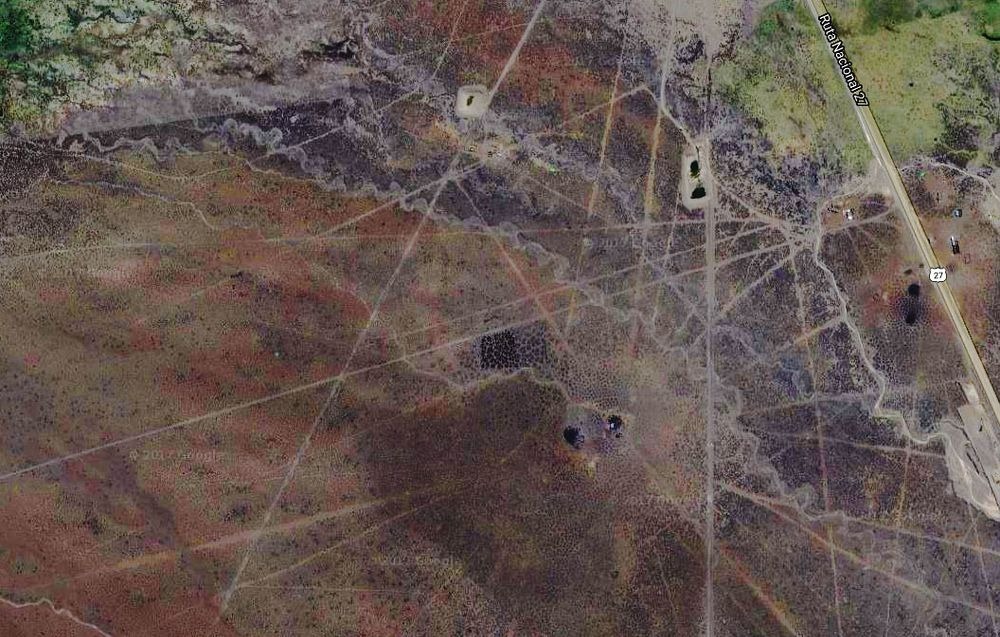
Hypogeum of Hal Saflieni
The only remaining intact example of an underground labyrinth construction in all of Europe, the Hypogeum of Hal Saflieni in Malta was only discovered in 1902. This puzzling labyrinth is believed by experts to have been used from 4000 to 2500 BCE. Though this labyrinth — carved right out of the rock surrounding it — is made up of three levels, one level stands out. One level, which has been labeled as the Oracle Chamber, is an indication that the carvers of this labyrinth actually had advanced knowledge of acoustics. If you were to stand in this chamber and speak at a normal volume, your voice would be amplified a hundred times and reverberate through the entire chamber.
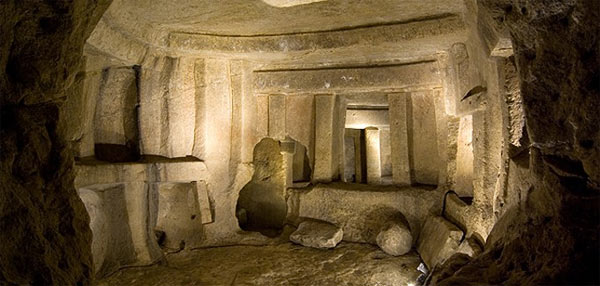
Youtube
Gobekli Tepe
Although Gobekli Tepe in Turkey is thought to be the oldest temple complex ever built by man, dated at 11,000 BCE (an astounding 6,000+ years older than Stonehenge in England), it is also one of the newest finds in the archaeological world; Gobekli Tepe was found in just 2008 by Klaus Schmidt. This temple complex is made up of enormous cared-stone structures, and it helps give scientists a better idea of how societies evolved and how ancient people lived. This find also alludes to the fact that there are even more ancient places and artifacts that are, as of yet, undiscovered and just waiting to be stumbled upon.
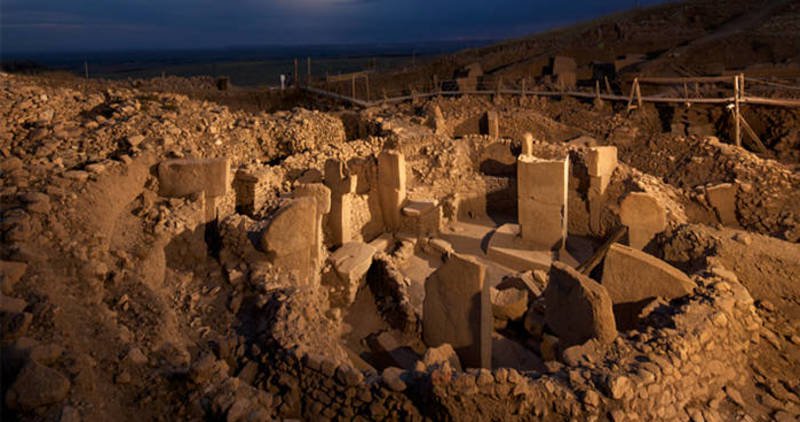
Youtube
Dashka Stone
Found in the town of Bashkorostan, Russia, which is located in the Ural Mountains, the Dashka Stone is a large stone tablet, which weighs more than a ton. The persons who unearthed this large stone tablet first believed that the cracks and lines on the tablet were formed naturally; however, they then discovered that the cracks and lines were meaningful: they created a topographical map of the surrounding area. More puzzling, though, was the fact that the perspective of the map shows the region from above. The tablet has been aged between 3,000 and 120 million years old.
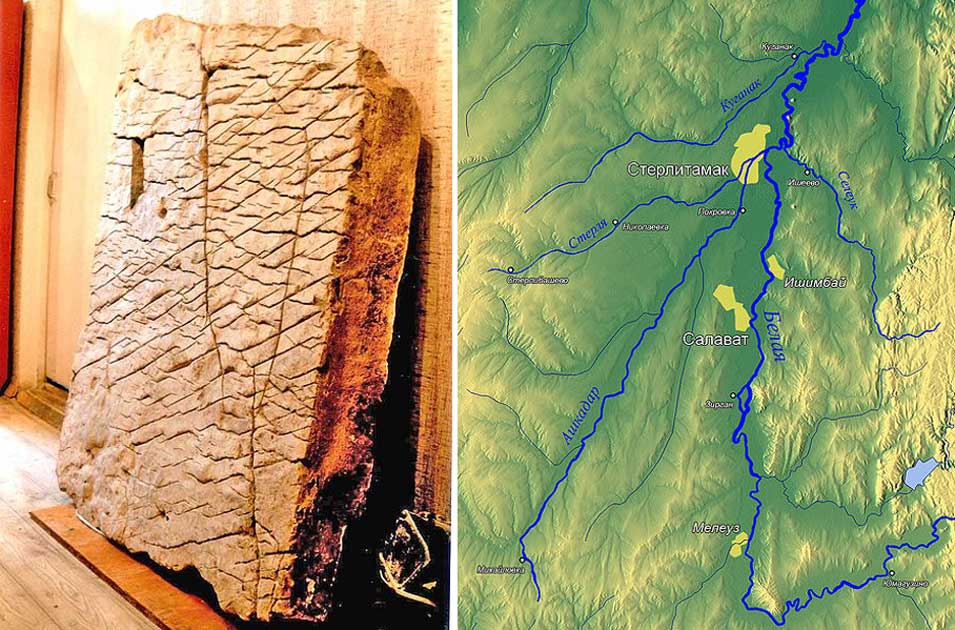
Youtube
Paracas Candelabra
The Paracas Candelabra is also called. the “Candelabra of the Andes.” This mysterious glyph is located on the face of the Paracas Peninsula in Peru and is over 600 feet high. Despite its common name, archaeologists do not really believe that this geoglyph was created to resemble a candelabra. The three-pronged design of this geoglyph more likely resembles a trident — to pay homage to Viracocha, the trident-wielding Incan creator god — or Jimson weed — a hallucinogenic, which was commonly used in religious rituals. Because of other nearby archaeological finds, the Paracas Candelabra is believed to be dated back to around 200 BCE.
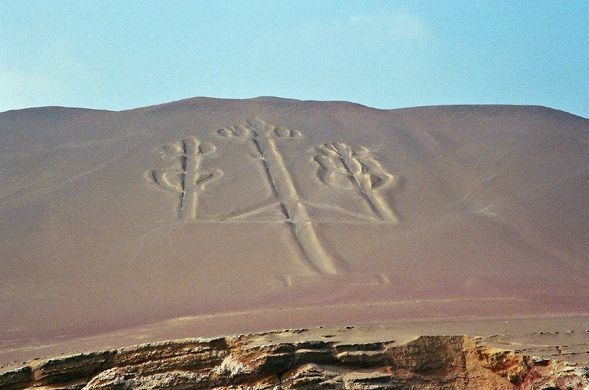
Youtube
Dogu
Dogu are little clay figurines that depict human-animal hybrids, wearing what looks like helmets with goggles on them. They date back to Japan’s Neolithic Jomon period, which means that these clay figurines can be between 2,300 and 10,000 years old. To date, there have been approximately 15,000 of these clay figurines found in Japan. Even though there are so many dogu that have been found, there is no exact explanation for them.

The Big Circles
These huge circles range from 720 to 1,490 feet and are made from stone. Located mainly in Syria, nobody knows the purpose of these 2,000-year-old structures.
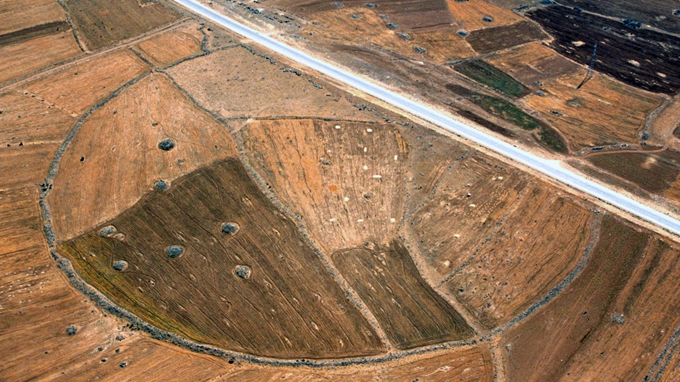
Mount Owen Moa Claw
First discovered in 1986, this ancient claw still has flesh on it and was at first thought to be a dinosaur. It turned out to be a Moa bird, a species extinct for over 3,000 years. How was the claw in such good shape?
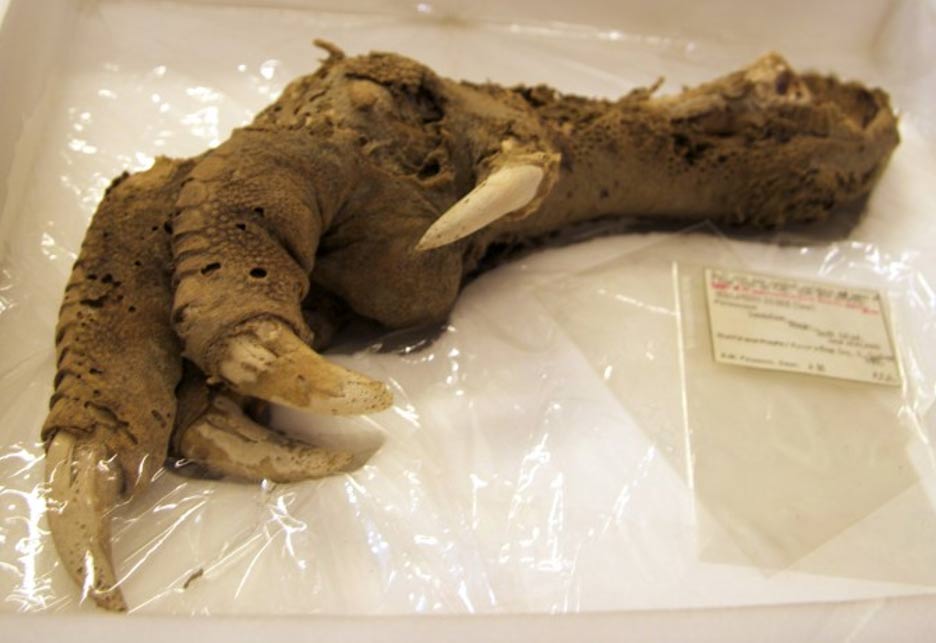
Longyou Caves
These caves appear to have been deliberately carved in sandstone over 2,200 years ago, with some over 100 feet tall. There are carved bridges, pillars, etc throughout the extensive cave system. How was it built, and why?
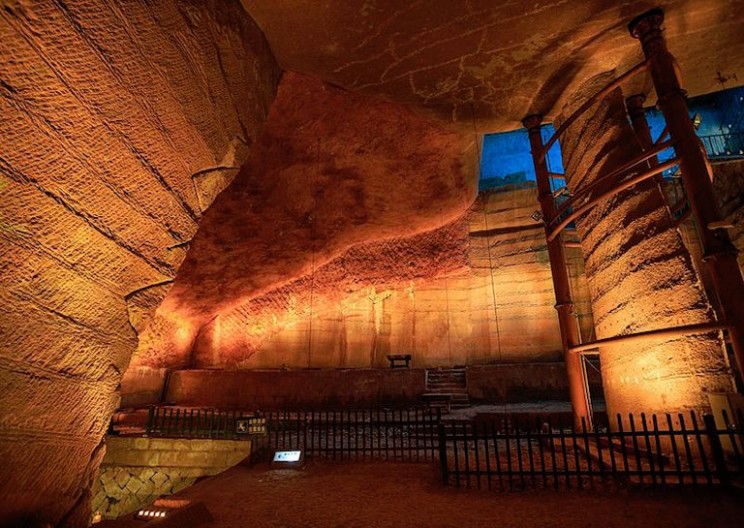
Lady of the Spiked Throne
Dating back to 2700 BC, this strange artifact looks like a boat with the head of a bull and 15 passengers. Nothing like it has been found.
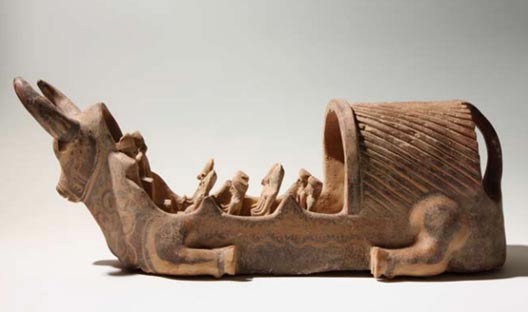
Panxian Cave
These caves are 5,000 feet above sea level and there is evidence people lived in them. The mystery is that there are also bones of very large animals like stegodons and rhinoceros. How did they get up there?
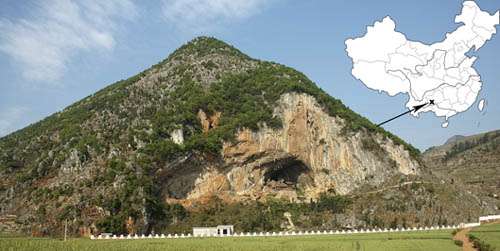
White Shaman Rock
In the southwestern part of Texas lived the ancient Huichol tribe of Native Americans. The Huichol engaged in cave and canyon drawing and, due to their remote location, were able to evade the Europeans, who were settling other areas of the Sierra Madre Mountains, for longer than most other tribes. However, when the Europeans did finally come upon the Huichol tribe, they were astonished at what they saw. Despite never interacting with the previous groups of European settlers, the Huichol created what is known as White Shaman Rock: a rock with a drawing depicting a 24-foot tall white person. This drawing, which was found in the Lower Pecos River Canyon, is estimated to be at least 4,000 years old, which means that is was created long before these white Europeans became known to the people of the Huichol tribe.
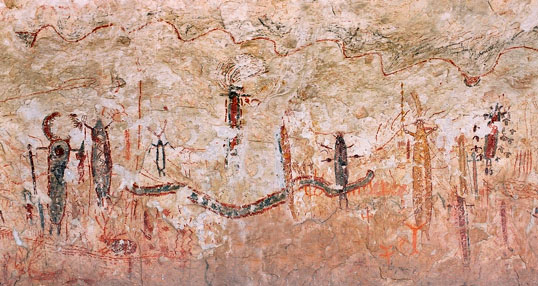
Phaistos Disc
The Phaistos Disc has been surrounded by debate ever since it was first discovered in 1908. The Phaistos Disc is an artifact dating back to some time between 1850 and 1600 BC, which puts it into the time period of the middle to late Minoan Bronze Age. This artifact, a round clay disc, was unearthed on the Greek island of Crete in a Minoan palace called Phaistos. The Phaistos Disc has 241 symbols pressed into it, in a spiral pattern. However, the symbols have not been linked to any written language, and the meaning of the symbols are still unknown.

Dropa Stones
Archeologist Chi Pu Tei and his team discovered the Dropa Stones in the Bayan-Kara-Ula Mountains of China in 1938. They are in fact hundreds of stone discs that look a lot like modern records which play music. They even have a hole in the center and a spiral groove. When examined more closely under a microscope, researchers also saw symbols in the grooves that looked like hieroglyphs. While we may never know what they say, it is believed that these 12,000-year-old artifacts contain information.
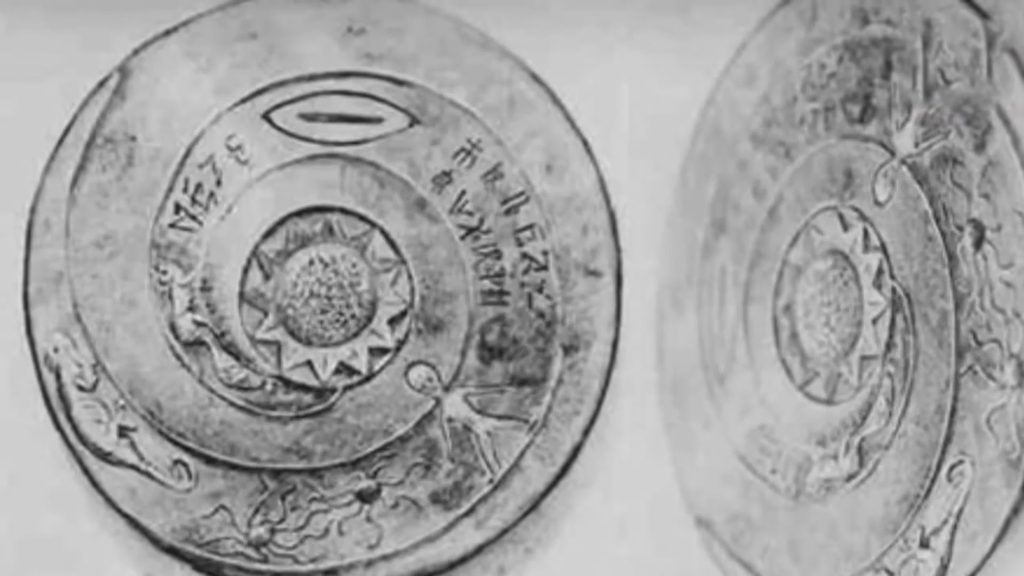
Amazing
Scientists Reveal ‘Olo’: A Never-Before-Seen Color Created with Precision Laser Tech

In a stunning leap forward for vision science, researchers have unveiled a color no human has ever seen before. The new hue—named olo—is described as an intensely saturated blue-green that falls outside the boundaries of the natural human color spectrum.
Published in Science Advances, the study comes from a collaboration between scientists at the University of California, Berkeley, and the University of Washington. At the heart of the discovery is a new experimental tool dubbed Oz, a laser-based system that allows researchers to stimulate individual photoreceptors in the human retina with unprecedented precision.
“The Oz system represents a new experimental platform in vision science,” the study states. It works by isolating and activating just one type of cone cell—specifically, the M cones responsible for detecting green light—while bypassing the other two (S and L cones, which are sensitive to blue and red light, respectively). This kind of targeted stimulation isn’t possible under natural viewing conditions, where any light usually activates multiple types of cones at once.
In controlled experiments using laser light directed into the eyes of five participants—all with normal color vision—scientists were able to generate a perceptual experience unlike anything in nature. By activating only the M cones, participants reported seeing a blue-green shade that felt completely novel and extraordinarily vivid.
“By activating only the M cones, we elicited a color beyond the natural human gamut,” the researchers wrote. They described olo as a color of “unprecedented saturation.”
This discovery doesn’t just expand our understanding of color—it could also have practical implications. The Oz platform may pave the way for more advanced research into visual processing, new treatments or diagnostic tools for color blindness, and potentially even new types of displays capable of showing colors previously thought impossible to reproduce.
As the study concludes, “This new class of programmable platform will enable diverse new experiments,” including deeper exploration into how flexible and adaptable human color perception really is.
With olo, the boundaries of the visible world just got a little wider.
Amazing
From Wheels to Wonder: Paralysed Skater Transforms Old Boards into Bold Sculptures

When Nick Harding lost the ability to skateboard, he never imagined he’d find a new way to stay connected to his lifelong passion — through art.
In 2019, Nick was suddenly paralysed by Guillain-Barré syndrome (GBS), a rare auto-immune condition where the immune system attacks the nervous system. What started as a sore hamstring quickly escalated into a medical emergency. Within an hour of arriving at the hospital, he was on life support. He spent 13 weeks in intensive care at Southmead Hospital in Bristol and seven months in recovery, relearning how to walk and use his arms.
“Skating has always been a huge part of my life,” Nick said. “Having an outlet for that desire to play with my favourite toy is what brought the sculptures about.”
With his old decks stacked in a corner and his body still rebuilding strength, Nick began experimenting. His early attempts to make practical items were shaky — his hands lacked coordination — so instead, he focused on creating something beautiful. With no prior carpentry experience, he turned to YouTube tutorials, teaching himself to shape, sand, and finish colorful, psychedelic forms from the layered wood of worn-out skateboards.
The process helped rebuild his dexterity, but it also served as a mental anchor. “I just focused on doing a little bit every day,” he said. “It was the process that felt good when I was at my lowest.”
Now, Nick sells his sculptures through his Etsy shop Mobius Maples and has gained fans from around the world. His pieces — all carved from donated, broken, or retired boards — are abstract, swirling forms that capture the movement and spirit of skateboarding.
But for Nick, it’s not just about the art or even the recovery. It’s about staying connected to the Bristol skate scene that shaped him. He donates pieces to skate competitions and charity auctions and even hides small keychains around the city for his Instagram followers to find.
“It wouldn’t be anything if it was just me,” he said. “It’s also people who give me their old boards. Interacting with the art and letting me be involved with things is what’s kept it going.”
“I want it to be something that adds to the community, and I’m so grateful that I still have the opportunity to do that.”
Through creativity, community, and resilience, Nick Harding has transformed adversity into something both healing and inspiring — turning the boards that once carried him across pavement into lasting works of art.
Amazing
Community Petition Saves Wally the Beaver from Euthanasia

Wally, a beloved beaver who became a community favorite in Northern Virginia, was saved from euthanasia thanks to the efforts of thousands of supporters who rallied together through an online petition.
Wally first gained popularity at Huntley Meadows Park in Fairfax County, where locals and visitors often saw him hard at work building dams. However, wildlife officials considered euthanizing him after concerns arose over flooding and tree damage caused by his dam-building activities.
The community swiftly stepped in, launching a petition that quickly gathered over 10,000 signatures. Advocates argued that the beaver’s positive impact on the ecosystem—creating wetlands and habitats for other wildlife—far outweighed any inconveniences.
Local officials eventually agreed, opting instead for a humane relocation effort. Wally will now be safely moved to a suitable habitat rather than being euthanized.
“This shows how much our community values wildlife,” said Julie Ames, the petition’s creator. “We’re thrilled our voices were heard.”
Residents celebrated the decision, highlighting how Wally’s survival symbolizes the growing awareness of peaceful coexistence with local wildlife.
Amazing
Third Eaglet Joins Big Bear’s Beloved Bald Eagle Family

A third eaglet hatched yesterday in the much-loved bald eagle nest near Big Bear Lake, marking a delightful moment for the growing number of wildlife enthusiasts who have been closely watching the family online.
The nest, located in the San Bernardino National Forest near Big Bear, California, has been streaming live via the Friends of Big Bear Valley eagle cam. Observers were excited to witness the third chick hatch, a significant event considering that bald eagles usually lay two eggs, with three being somewhat unusual.
The parents, affectionately named Jackie and Shadow, are local celebrities among bird watchers. According to the Friends of Big Bear Valley, these parents have gained fame for their caring behavior, ensuring their chicks remain healthy and thriving despite the occasional harsh weather conditions.
“The hatch was smooth and perfectly timed,” said Sandy Steers, executive director of Friends of Big Bear Valley. “It’s heartwarming to see this family continue to flourish.”
Wildlife experts emphasize the importance of maintaining a respectful distance, reminding the public that the best way to enjoy and protect these birds is by observing remotely via the eagle cam.
Viewers can continue to monitor the eaglets’ development, celebrating each milestone as the chicks grow into young eagles over the coming weeks.
Amazing
Pocatello’s Last Video Rental Store Preserves Tradition for Devoted Patron

In an era where digital streaming dominates, the closure of Video Stop marked the end of an era for Pocatello, Idaho. However, for one loyal customer, the spirit of the traditional video rental experience continues, thanks to the store owner’s thoughtful initiative.
For over 15 years, 35-year-old Christina Cavanaugh, who has Down syndrome and is mostly nonverbal, maintained a cherished routine of visiting Video Stop almost daily with her mother, Toni. This ritual was integral to Christina’s daily life, providing her with joy and consistency. The prospect of the store’s closure posed a significant disruption to her routine, causing concern for Toni about how to explain the change to her daughter.
Understanding the importance of this routine to Christina, Video Stop’s owner, David Kraning, decided to preserve a portion of the store’s collection. He dedicated a corner in his adjacent business, K & B Kwik Stop, to house these movies, ensuring Christina could continue her beloved visits. This thoughtful gesture not only maintained a sense of normalcy for Christina but also highlighted the deep bonds formed between local businesses and their patrons.
Toni expressed immense relief and gratitude for Kraning’s actions, likening the news to “being sentenced to prison and then getting a reprieve.” She praised the community-oriented approach of Kraning and his staff, who have always been attentive to Christina’s unique needs, even training new employees on how to interact with her during checkout.
While the era of video rental stores may be fading, the compassion and dedication demonstrated by Kraning ensure that, for Christina, the magic of selecting a physical movie remains alive. This story serves as a heartwarming reminder of the impact local businesses can have on the lives of their customers, going beyond transactions to form meaningful, supportive relationships.
-

 OMG7 years ago
OMG7 years agoA Couple Gave Birth to the Most Beautiful Twins Ever
-

 OMG7 years ago
OMG7 years ago20 Rare Historical Photos
-

 OMG7 years ago
OMG7 years agoHilarious Airport Photos
-

 Cute7 years ago
Cute7 years agoMom Refuses to Let Daughter Eat Sugar and Years Later This is What She Grows Into
-

 OMG7 years ago
OMG7 years agoTop Secret Air Force One Facts That You Never Knew
-
OMG6 years ago
The Funniest Yearbook Photos Of All Time
-

 OMG7 years ago
OMG7 years agoRetired Mathematician Restores Log Cabin
-

 OMG6 years ago
OMG6 years agoWhat Happened When This ‘Duck Dynasty’ Legend Chopped Off His Beard?